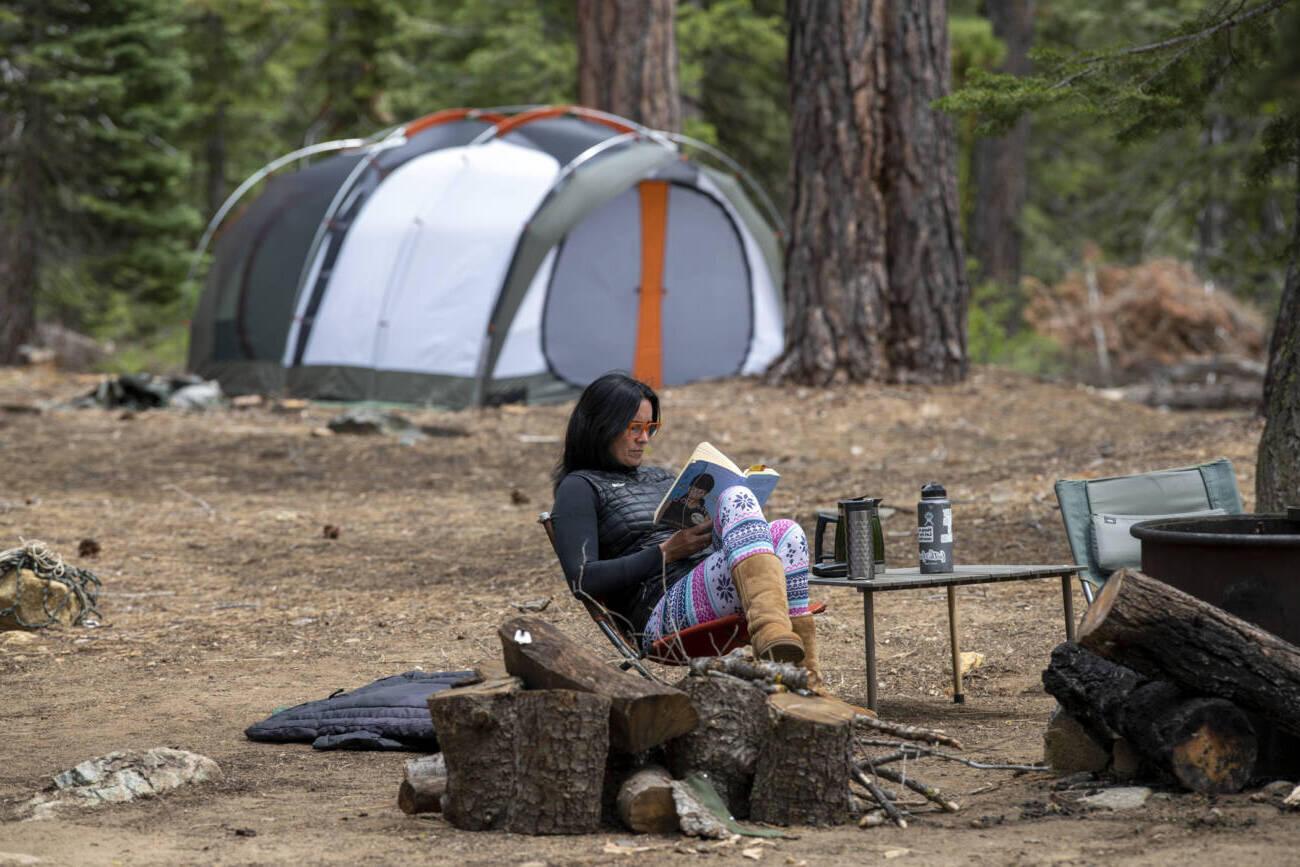
Camping is an age-old activity that has captivated human beings for centuries. From ancient nomadic tribes to modern-day enthusiasts, camping has evolved significantly. Did you know that modern camping was "invented" in 1908 by Thomas Hiram Holding? His book, "The Camper’s Handbook," played a huge role in popularizing this outdoor adventure. Today, over 84 million Americans go camping each year, making it a beloved pastime. Whether you're pitching a tent in the mountains or glamping in a luxury RV, camping offers something for everyone. Ready to dive into some intriguing facts about this timeless activity? Let's get started!
Key Takeaways:
- Camping has a rich history, from military campaigns to modern recreational activities. It offers numerous health benefits and is a popular activity among Americans, especially millennials.
- Tents remain the most popular camping accommodation, and nearly all campers bring technology on their trips. Camping fosters closer relationships and promotes physical fitness.
The Origins of Modern Camping
Camping has a rich history that has evolved over centuries. Let's explore some intriguing facts about its origins and development.
-
Modern Camping was “Invented” in 1908
Thomas Hiram Holding, a British camping enthusiast, wrote "The Camper’s Handbook" in 1908, which is often credited with popularizing modern recreational camping. -
The Scouting Movement has Played a Big Role in Recreational Camping
Founded by Robert Baden-Powell, the Scouting movement has been pivotal in promoting camping, especially among youth, emphasizing outdoor skills and teamwork. -
Military Campaigns Involved Camping
Throughout history, military campaigns have relied on camping for strategic planning, restocking supplies, and providing shelter for soldiers. -
Roald Amundsen Camped His Way to the South Pole
Roald Amundsen's team used well-equipped base camps and supply depots to reach the South Pole, showcasing the importance of camping in extreme expeditions.
Popular Camping Accommodations and Gear
Camping accommodations and gear have evolved, offering various options for different preferences and needs.
-
The Most Popular Camping Accommodations are Tents
Tents remain the most popular form of camping due to their simplicity, affordability, and close connection to nature. -
The Traditional Mongolian Tent is Called a Ger
Gers, made from animal hide and wood, have been a part of Mongolian nomadic culture for centuries, providing sturdy and comfortable shelter. -
The Most Commonly Bought Camping Item is the Flashlight
Despite technological advancements, flashlights are essential for nighttime activities and emergencies, making them the most commonly bought camping item. -
Squirrels are the Menace of the Campsite
Squirrels often raid supplies and cause chaos at campsites, but they also play a crucial role in the ecosystem by dispersing seeds.
Camping Demographics and Trends
Understanding who goes camping and why can provide insights into its popularity and cultural significance.
-
Campers Do Not Leave Their Tech Behind
Nearly all campers (97%) bring some form of technology, such as smartphones and GPS devices, on their trips. -
Over 84 Million Americans Go Camping Each Year
Camping is a popular recreational activity in the United States, with over 84 million Americans participating annually. -
The 1927 Girl Scouts Manual Featured the First Official Recipe for S’mores
The classic camping treat, s’mores, was first officially documented in the 1927 Girl Scouts manual. -
Millennials Go Camping More Than Any Other Age Group
Millennials are the most avid campers, motivated by a love of outdoor activities, nature, music festivals, and sharing photos on social media.
Luxurious and Unique Camping Experiences
Camping isn't just about roughing it; there are luxurious and unique options available for those seeking a different experience.
-
The Clayoquot Wilderness Resort is the Most Expensive Camping Spot in the World
Located in Vancouver Island, Canada, this luxury resort offers high-end amenities and exclusive experiences, costing $3,900 per night. -
There is No Universally Held Definition of Camping
Camping embodies the spirit of escaping everyday life and embracing the outdoors, allowing for a wide range of styles and experiences. -
The Majority of Campers are Caucasian Males with an Average Age of 35
In the United States, most campers are Caucasian males around 35 years old, reflecting broader societal trends. -
The Mountain Region is Slightly More Popular as a Camping Destination
The Mountain Region, including states like Montana and Arizona, attracts many campers due to its diverse landscapes and outdoor activities.
Camping Habits and Preferences
Campers have distinct habits and preferences that shape their camping experiences.
-
Campers Typically Go on 3.8 Trips Per Year
On average, campers in the United States take 3.8 trips annually, each lasting about 2.7 nights and driving approximately 146 miles to their destinations. -
Approximately 42% of Campers Choose to Camp at State Park Campgrounds
State park campgrounds are popular among campers for their well-maintained facilities and scenic environments. -
The World’s Smallest Camper is Called a ‘Cramper’
The ‘cramper’ is a pedal-powered camper with 4 feet of living space, designed for minimalist camping and easy transportation. -
Campers Spend an Average of $128.26 on Their First Camping Trip
First-time campers typically spend around $128.26 on essential gear like tents, sleeping bags, and cooking equipment.
Cultural and International Camping Trends
Camping practices and preferences vary across cultures and countries, offering unique insights into this beloved activity.
-
Around 68% of Adult Campers are Married or Living with a Partner
Camping is often a family activity, with 68% of adult campers being married or living with a partner. -
The Most Popular Type of Shelter Among Campers is a Tent
Tents are favored for their flexibility and convenience, allowing campers to set up and dismantle their shelters easily. -
RV Users Camp for 3.7 Nights on Average
RV users tend to camp longer (3.7 nights) compared to tent users (2.5 nights), reflecting the comfort and amenities provided by RVs. -
Traditional Bedouin Tents are Made Out of Black Goat Hair
Bedouin tents, made from black goat hair, offer insulation and durability in harsh desert environments. -
Germans Love to Camp and Often Bring Family and Extended Family
Germans enjoy camping with family and extended family, often overpacking with essentials like licorice, cheese, and peanut butter. -
The Dutch Love to Camp and Are Famous for Their Caravan Traffic Jams
Dutch campers are known for their caravan traffic jams on weekends and holidays, bringing essentials similar to the Germans.
Safety and Health Benefits of Camping
Camping offers numerous health benefits and requires safety precautions to ensure a positive experience.
-
Married People Are More Likely to Have Sex While Camping Than at Home
Camping fosters closer relationships among couples, with married people more likely to have sex while camping than at home. -
The Top Five Most Popular Places to Camp in the World Include Wadi Rum, Jordan
Popular camping destinations include Wadi Rum, Jordan; Merzouga, Morocco; Patagonia, Argentina; Asturias, Spain; and Connemara, Ireland. -
About 243 People Die Each Year in U.S. National Park Services
Despite attracting over 312 million visitors annually, U.S. National Parks have a low death ratio of less than one in a million. -
The Most Common Causes of Death While Camping at National Parks Are Drowning, Car Accidents, Falling, and Suicide
Safety precautions and awareness are crucial during outdoor activities, as common causes of death include drowning, car accidents, falling, and suicide.
Historical Innovations in Camping Gear
Innovations in camping gear have significantly improved the camping experience over time.
- Confederate States Army Officer Henry Hopkins Sibley Invented the First Modern Tent in 1855
Henry Hopkins Sibley invented the "bell tent" in 1855, modeled after Native American tents but using canvas instead of buffalo hides.
Health and Relationship Benefits of Camping
Camping offers numerous benefits for mental and physical health, as well as relationships.
-
Camping Helps Reduce Stress and Depression
The natural environment and lack of distractions during camping help reduce stress and depression, promoting mental well-being. -
Fresh Air Has Numerous Benefits
Camping provides an opportunity to breathe in fresh air, which improves respiratory health and increases oxygen intake. -
Camping Improves Relationships
Shared experiences and close quarters during camping foster deeper connections among family and friends. -
Camping Promotes Physical Fitness
Outdoor activities like hiking, setting up tents, and gathering firewood during camping help increase physical activity levels and improve overall health.
The Joys of Camping
Camping offers a unique blend of adventure, relaxation, and connection with nature. From its historical roots with Thomas Hiram Holding to the modern-day popularity among millennials, camping has something for everyone. Whether you're pitching a tent, staying in an RV, or splurging on a luxury resort, the experience brings numerous benefits. It reduces stress, improves relationships, and promotes physical fitness. Plus, who can resist the charm of making s'mores by a campfire?
With over 84 million Americans camping each year, it's clear this activity isn't going anywhere. From the mountains to state parks, the options are endless. So, grab your flashlight, pack your gear, and head out for an adventure. Whether you're a seasoned camper or a newbie, the great outdoors await. Happy camping!
Frequently Asked Questions
Was this page helpful?
Our commitment to delivering trustworthy and engaging content is at the heart of what we do. Each fact on our site is contributed by real users like you, bringing a wealth of diverse insights and information. To ensure the highest standards of accuracy and reliability, our dedicated editors meticulously review each submission. This process guarantees that the facts we share are not only fascinating but also credible. Trust in our commitment to quality and authenticity as you explore and learn with us.


